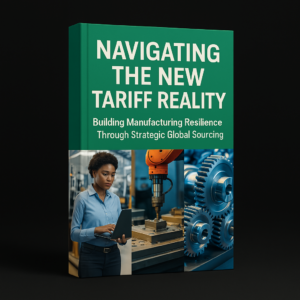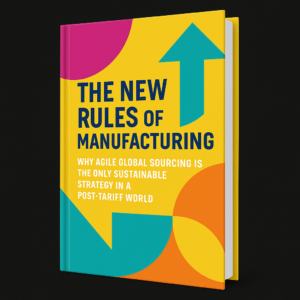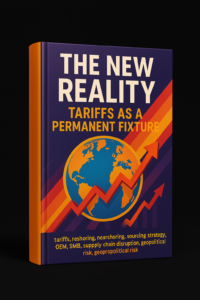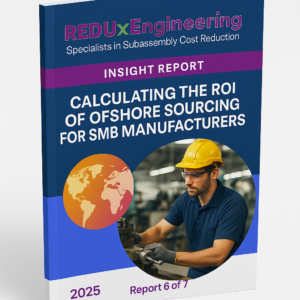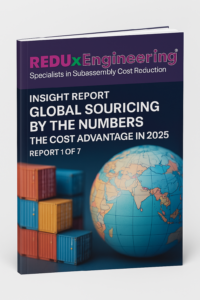
Introduction:
Western manufacturers are under intense margin pressure. Even with new trade tariffs and a push toward “localization,” the hard numbers show that offshore sourcing still delivers a major cost advantage in 2025. This report breaks down the cost factors – from labor to materials – to quantify why strategic offshoring can yield double-digit percentage savings for small and mid-sized manufacturers. The goal is to set the stage with data, dispelling myths that “offshore sourcing is dead” by highlighting the very real cost gaps that persist.
Labor Costs – A Dramatic Gap:
Labor is often the single biggest cost driver in manufacturing, and the difference between Western and offshore labour costs is stark. As of early 2025, the average hourly wage for a European manufacturing production worker is about $30.89 (base wage). But “fully loaded” manufacturing labour cost in the Uthe EU – after accounting for benefits, overhead, and support staff – actually ranges roughly $77 to $116 per hour. By contrast, the equivalent fully loaded labour cost in a country like China can be around $15 per hour or even less. In other words, EU manufacturers might be paying 4 to 11 times more for the same hour of factory work than their overseas counterparts. This enormous gap is echoed by independent analyses: one study notes that all-in manufacturing employee costs in China are about $15–20k per year versus $80–100k in the West – implying 50–60% lower total manufacturing costs in China after productivity and overhead are factored in.
Material and Input Costs:
Cheaper labour isn’t the only factor. Raw materials and parts themselves tend to cost less in offshore supply chains. REDUx Engineering’s data shows that, on average, the same hardgoods components and materials cost about 30% more in the EU than if sourced from China. This is partly due to the labour embedded in materials production and partly due to scale and supply chain efficiencies in Asia. External research confirms a portion of this gap: underlying materials costs in China are estimated ~10% lower than in the U.S. on average (with some materials like basic metals and glass being 20–40% cheaper). On the flip side, manufacturers in Western Europe face even higher input costs – for instance, German industrial input prices average ~40% above U.S. and 60% above China due to higher energy and logistics costs. The bottom line is that whether it’s electronic parts or injection-molded plastics, Western companies pay a premium of 10–40%+ on materials when sourcing locally.
Total Cost Savings Potential:
When you combine labour and material differentials, the total cost of manufacturing in a low-cost country can be dramatically lower. In fact, for typical tech and hardgoods products, studies and real-world programs consistently find 20%–50% net cost savings by offshoring production of parts and subassemblies. REDUxEngineering’s own portfolio of projects supports this range: for small-to-mid sized manufacturers in Canada, Western Europe, and similar high-cost regions, offshore sourcing (done right) yields roughly 19%–49% cost savings on manufactured parts. That kind of reduction can flip a company’s financial outlook – turning an unprofitable product line into a profitable one, or offsetting recent tariff increases (more on that in a later report). Even on the low end, saving ~20% of cost can significantly boost gross margins for a manufacturer operating on slim 5–10% net margins. On the high end, saving 40%+ can free up enormous cash flow for investment elsewhere.
It’s worth noting that these savings figures are after accounting for logistics and tariff costs. Even when you factor in shipping costs, import duties, and the management overhead of an offshore supplier, the math still favours global sourcing in many cases. For example, one REDUxEngineering client moved production of a metal part offshore and saw unit cost drop from $12 to $5 – after adding freight and duty, the unit cost was around $6, still 50% cheaper than domestic. Such cases are not outliers; they illustrate the “new normal” in which offshore manufacturing, supported by expert cost engineering, can achieve multi-million-dollar savings for mid-sized firms.
Conclusion:
By the numbers, offshore sourcing remains a compelling cost strategy in 2025. Labor costs in top offshore hubs (China, India, Vietnam) are a fraction of Western levels, material prices are often lower thanks to economies of scale, and the combined effect is a 20–50% landed cost reduction for many types of parts. These savings directly improve profit margins and can be re-invested into growth (or used to buffer against price pressures in the market). The next reports will explore how to capture these savings responsibly – addressing quality control, lead times, and risk – but the first takeaway is clear: the cost advantage is real and substantial. For Western SMEs facing tight margins, ignoring global sourcing opportunities means leaving money on the table.
#OffshoreManufacturing #GlobalSourcing #SupplyChainStrategy #CostReduction #Manufacturing2025 #SMEManufacturing #LabourCostSavings #MaterialsSavings #REDUxEngineering #StrategicSourcing

